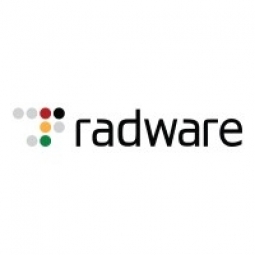Customer Company Size
Large Corporate
Region
- America
Country
- United States
Product
- Radware’s DefensePro
- Radware’s APSolute Insite management tool
Tech Stack
- Network Security
- Intrusion Prevention System
- Firewall
Implementation Scale
- Enterprise-wide Deployment
Impact Metrics
- Customer Satisfaction
Technology Category
- Cybersecurity & Privacy - Network Security
- Cybersecurity & Privacy - Intrusion Detection
Applicable Functions
- Business Operation
Use Cases
- Cybersecurity
Services
- Cybersecurity Services
About The Customer
The Conservation & Liquidation Office (CLO) is a subsidiary of the California Department of Insurance and was created by the Insurance Commissioner to assist him in fulfilling his duties as a court-appointed Conservator and Liquidator. The CLO oversees departments that operate and liquidate insurance companies and manages the affairs of conservatorship and receivership for the benefit and protection of policyholders. As of November 2006, the CLO liquidated assets in twenty-six companies, managing over one billion dollars in assets. Since 2000, the CLO has closed fifty-one companies or “estates” that are in conservation or liquidation. During conservation of an insurance company, the CLO takes over the entire operations of that company in order to conserve assets for the benefit of policyholders, creditors, and other persons interested in the assets of the company.
The Challenge
The Conservation & Liquidation Office (CLO), a subsidiary of the California Department of Insurance, is tasked with the conservation of insurance companies and the management of their affairs for the benefit and protection of policyholders. This involves taking over the entire operations of the company, including all policies, accounts, claims, and personal information of insured individuals. This information is subject to increased risk during the takeover procedure when the CLO establishes connectivity with the insurer’s network and IT infrastructure. The CLO previously relied on traditional firewall protection methods to secure its network and IT infrastructure. However, these methods provided insufficient protection to safeguard the crucial data and information the CLO was managing. The CLO needed a solution that would stop any attack from any entity, at headquarters as well as the regional insurance companies.
The Solution
After rigorous testing, evaluation, and benchmarking, the CLO chose Radware’s advanced application security solution – DefensePro. DefensePro, running on Radware’s high-performance security switch, is able to deliver maximum throughput and advanced security intelligence to isolate, block and prevent attacks in real-time from headquarters to the regional insurance companies that the CLO has to manage. Protecting against worms, viruses, spyware, pre-attack probes, and other threats, this easy-to-use, scalable solution proactively prevents both network- and application-level attacks while ensuring high performance for legitimate application traffic, even when under attack. DefensePro intercepts thousands of malicious signatures, hidden worms, and viruses, blocking application attacks at multi-gigabit speeds. By identifying and mitigating protocol and traffic anomalies in real-time, DefensePro prevents DoS/DDoS and SYN floods, safeguarding against all illicit traffic patterns and hacking.
Operational Impact

Case Study missing?
Start adding your own!
Register with your work email and create a new case study profile for your business.
Related Case Studies.

Case Study
Enel Secures Italian Power Generation Network
Electric energy operators around the world are working to increase the reliability and cyber resiliency of their systems. This includes Enel, a global power company that manages and monitors the Italian power grid. This grid:• Serves 31 million customers• Has a net installed energy capacity exceeding 31 gigawatts• Includes more than 500 power generation plants,including hydroelectric, thermoelectric, and wind• Is managed and monitored by Enel 24/7/365• Is operated by Terna, the Italian Transmission System Operator (TSO)Enel is responsible for the availability of the grid’s underlying ICS and industrial network. It also manages Regional Control Centers and Interconnection Centers which connect with the TSO. The TSO manages the flow of energy to the grid plus controls and remotely regulates the power generation of power plants, increasing and decreasing power production as required. The complex system of interaction and cooperation between Enel and the TSO has strong security implications as well as operational and business challenges.

Case Study
Securing the Connected Car Ecosystem
In-vehicle communications and entertainment system hosts high-value or sensitive applications. API libraries facilitate communication and sharing of vehicle data. These API libraries are vulnerable to reverse engineering and tampering attacks and may even result in loss of passenger safety. Attackers can inject malware that may be able to migrate to other in-car networks such as the controller-area-network (CAN) bus which links to the vehicle’s critical systems. Software provided for dealers to interface with cars through the OBD2 port is vulnerable to reverse engineering and tampering attacks. Hackers may be able to abuse these tools to inject malicious code into the ECUs and CAN bus. Attackers can lift the cryptographic keys used, and use that to build their own rogue apps/software. Their cloned version of the original app/software may have altered functionality, and may intend to gain access to other in-car networks.

Case Study
Secure and Cloud-based Data Marketplace
The great promise of new connected concepts of industry like 'Industry 4.0' is their ability to deliver a historically unparalleled level of responsiveness and flexibility. While modern supply chains are already heavily integrated and designed to be fluid and fast moving, a large swathe of manufacturing still remains beholden to economies of scale, large production runs, and careful preplanning.The Industrial Internet of Things (IIoT) is set to change this by allowing small-batch or even custom manufacturing on a truly industrial scale. With machines whose functions are not set in stone, but flexible and determined by their operating software and with a new form of connectivity bringing industrial engineers, product manufacturers, and end users closer together than ever before. Ad-hoc adjustments to automotive parts, for example, during active product runs or the bespoke manufacturing of custom sneakers become very viable options indeed.Much of this remains a theoretical vision, but IUNO, the German national reference project for IT security in Industry 4.0 demonstrates the new capabilities in action with a secure technology data marketplace running a smart drinks mixer.

Case Study
Expedia Hosted by 2lemetry Through AWS
Expedia is committed to continuous innovation, technology, and platform improvements to create a great experience for its customers. The Expedia Worldwide Engineering (EWE) organization supports all websites under the Expedia brand. Expedia began using Amazon Web Services (AWS) in 2010 to launch Expedia Suggest Service (ESS), a typeahead suggestion service that helps customers enter travel, search, and location information correctly. According to the company’s metrics, an error page is the main reason for site abandonment. Expedia wanted global users to find what they were looking for quickly and without errors. At the time, Expedia operated all its services from data centers in Chandler, AZ. The engineering team realized that they had to run ESS in locations physically close to customers to enable a quick and responsive service with minimal network latency.
.png)
Case Study
OTA Software Updates for Smart Energy (gridX)
gridX has a requirement for over-the-air software updates for their gridBox devices and used the Yocto Project for their builds. The driver for the requirement was having the ability to quickly support new features, as well as deploying bug fixed and path known security vulnerabilities. New software updates with a US stick manually to all gridBox devices in the field would be prohibitively expensive and labor-intensive.

Case Study
Transformed IT Infrastructure Improves Business Agility
A global security, storage, and systems management software provider planned to demerge into two separate companies. To prepare, it undertook a major overhaul of its IT infrastructure and operations strategy. A key requirement: streamlining the Hosting Group, which handled compute, storage, and middleware operations. These functions had grown complex and had a wide geographic distribution. The company planned to bring them under closer in-house management.The company looked to increase its business agility so it could quickly and creatively respond to customer demands with improved internal collaboration and optimized go-to- market and IT service delivery capabilities. Modernizing IT functions, and making them more responsive, was critical to achieving these goals.







